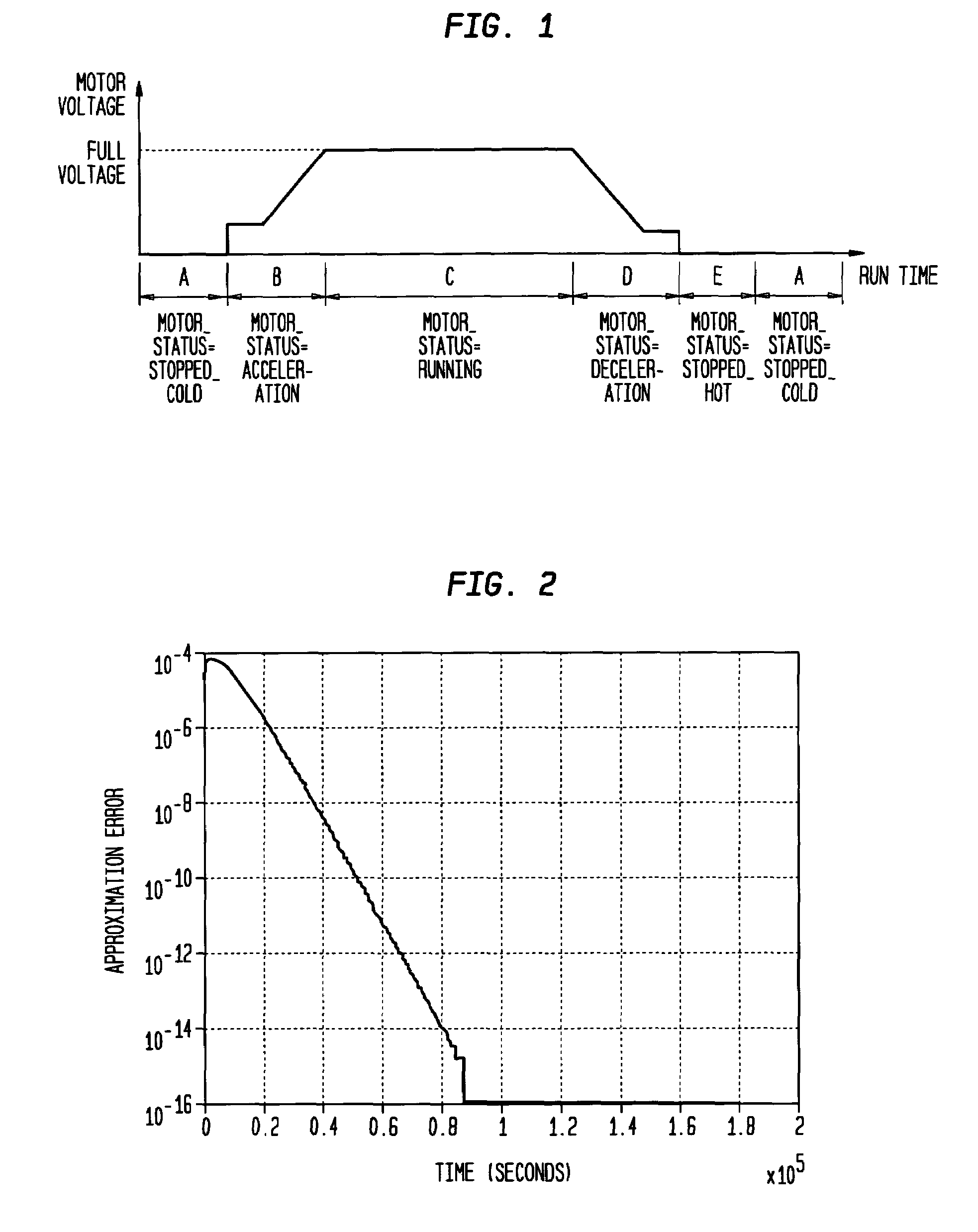System, device, and method for over-current relays protecting motors
a relay and motor protection technology, applied in the direction of emergency protective arrangements responsive to undesired changes, process and machine control, etc., can solve the problems of electromechanical relay algorithm and lsup>2/sup>t algorithm not accurately tracking the used thermal capacity of ac motors under varying load, failure of thermal memory test, and insufficient protection of ac induction motors. to achieve the effect of preventing the motor from overheating
- Summary
- Abstract
- Description
- Claims
- Application Information
AI Technical Summary
Benefits of technology
Problems solved by technology
Method used
Image
Examples
Embodiment Construction
[0047]The present invention provides a control algorithm for solid-state relay protecting for induction motors. The algorithm utilizes a thermal model of an AC induction motors. The algorithm calculates used thermal capacity of the motors based on motor currents. The relay trips once the used thermal capacity reaches limit. This invention also provides a method to derive thermal time constants from motor thermal limit curves and IEC standard 60947-4-2 [3][4]. The thermal time constants may then used in the control algorithm 600 and 700 for calculation of the used thermal capacity. The resultant algorithm may then satisfy the requirements of motor thermal limit curves and IEC standard 60947-4-2 [3][4].
[0048]The following is a list of nomenclature used throughout the application.[0049]q heat input to a motor per second, its unit is Joules / sec, i.e., Watts,[0050]dt an infinitely small time interval in seconds,[0051]τ temperature rise in ° C., defined as the temperature difference betwe...
PUM
 Login to View More
Login to View More Abstract
Description
Claims
Application Information
 Login to View More
Login to View More - R&D
- Intellectual Property
- Life Sciences
- Materials
- Tech Scout
- Unparalleled Data Quality
- Higher Quality Content
- 60% Fewer Hallucinations
Browse by: Latest US Patents, China's latest patents, Technical Efficacy Thesaurus, Application Domain, Technology Topic, Popular Technical Reports.
© 2025 PatSnap. All rights reserved.Legal|Privacy policy|Modern Slavery Act Transparency Statement|Sitemap|About US| Contact US: help@patsnap.com



